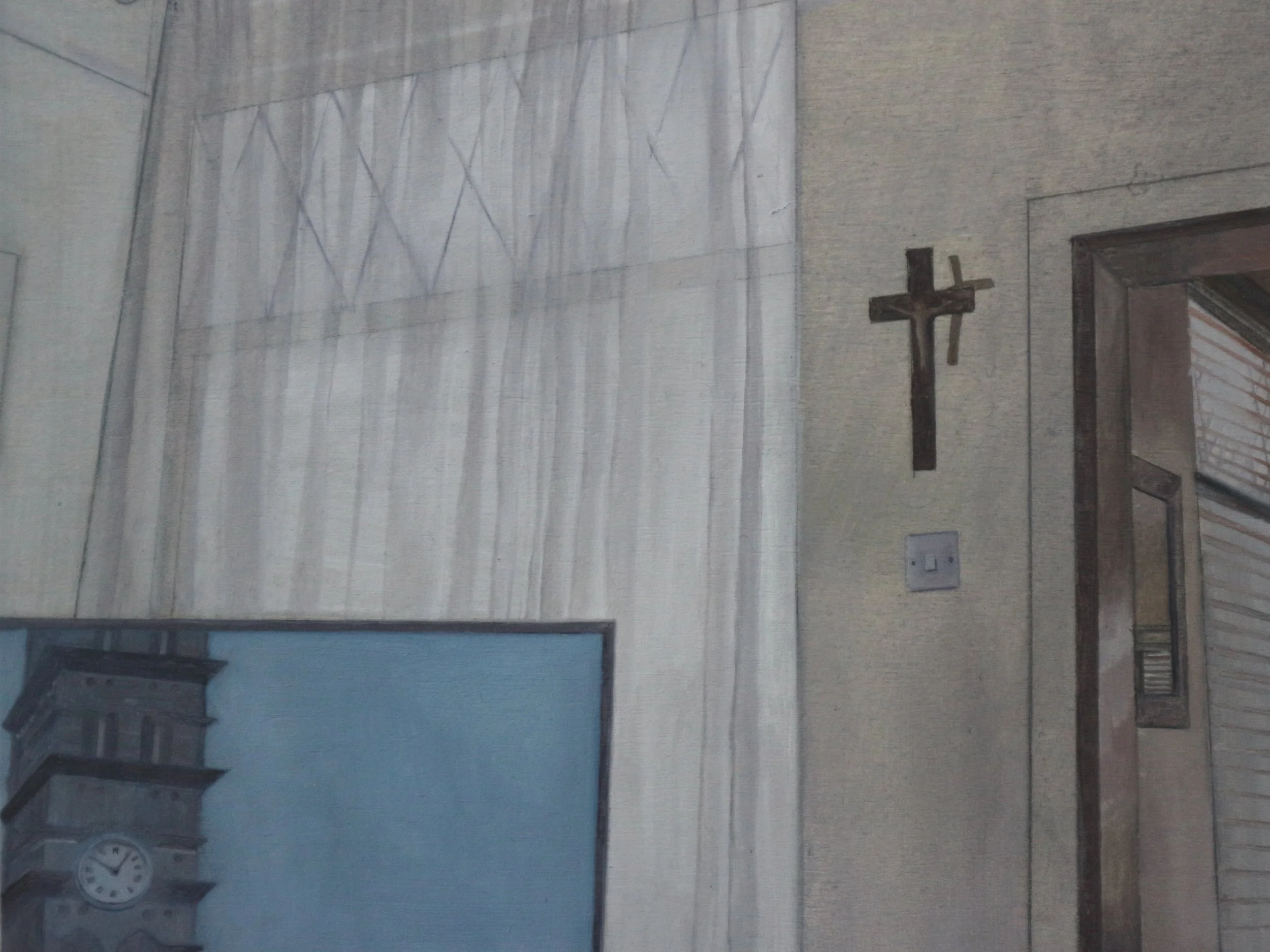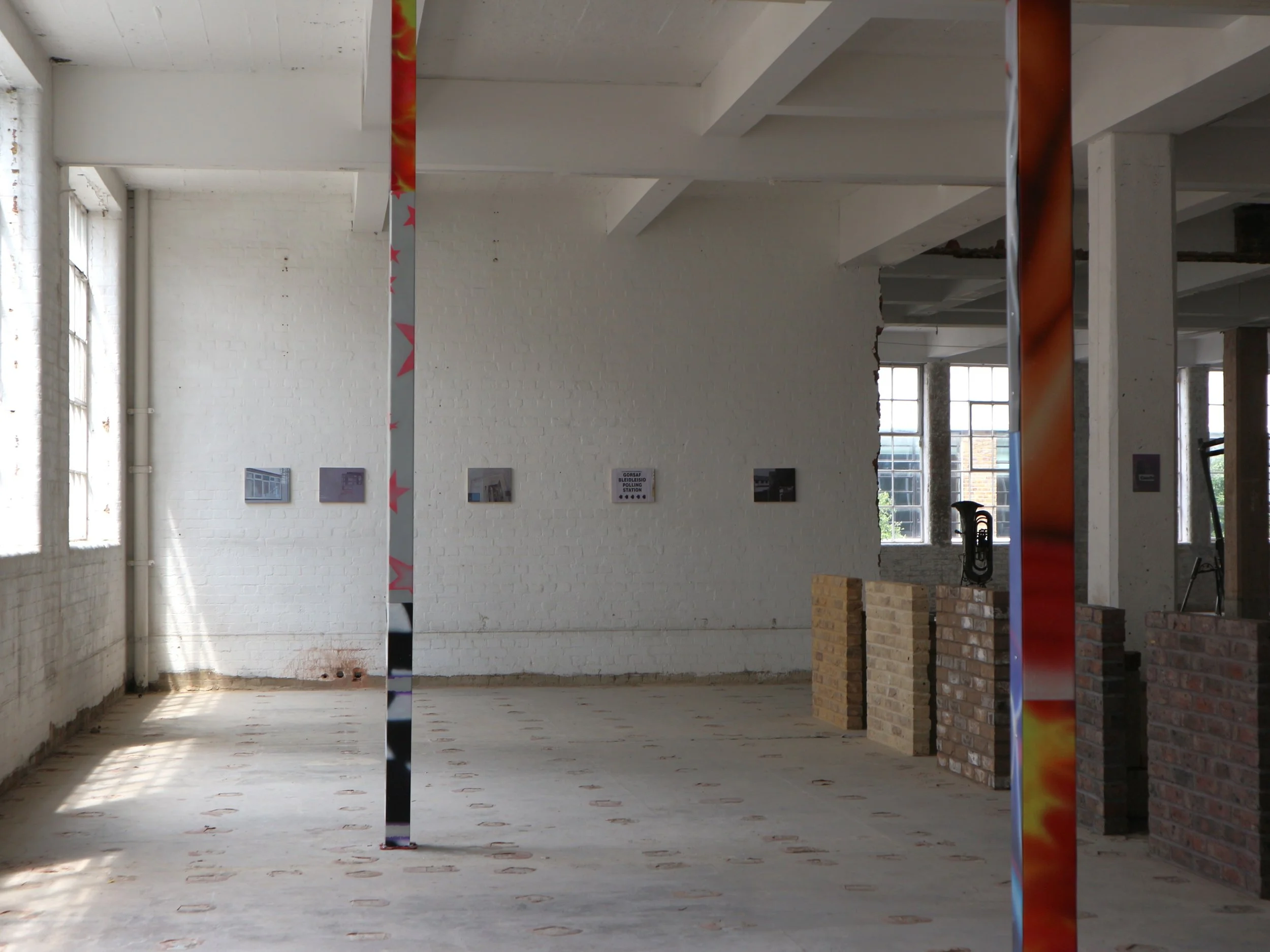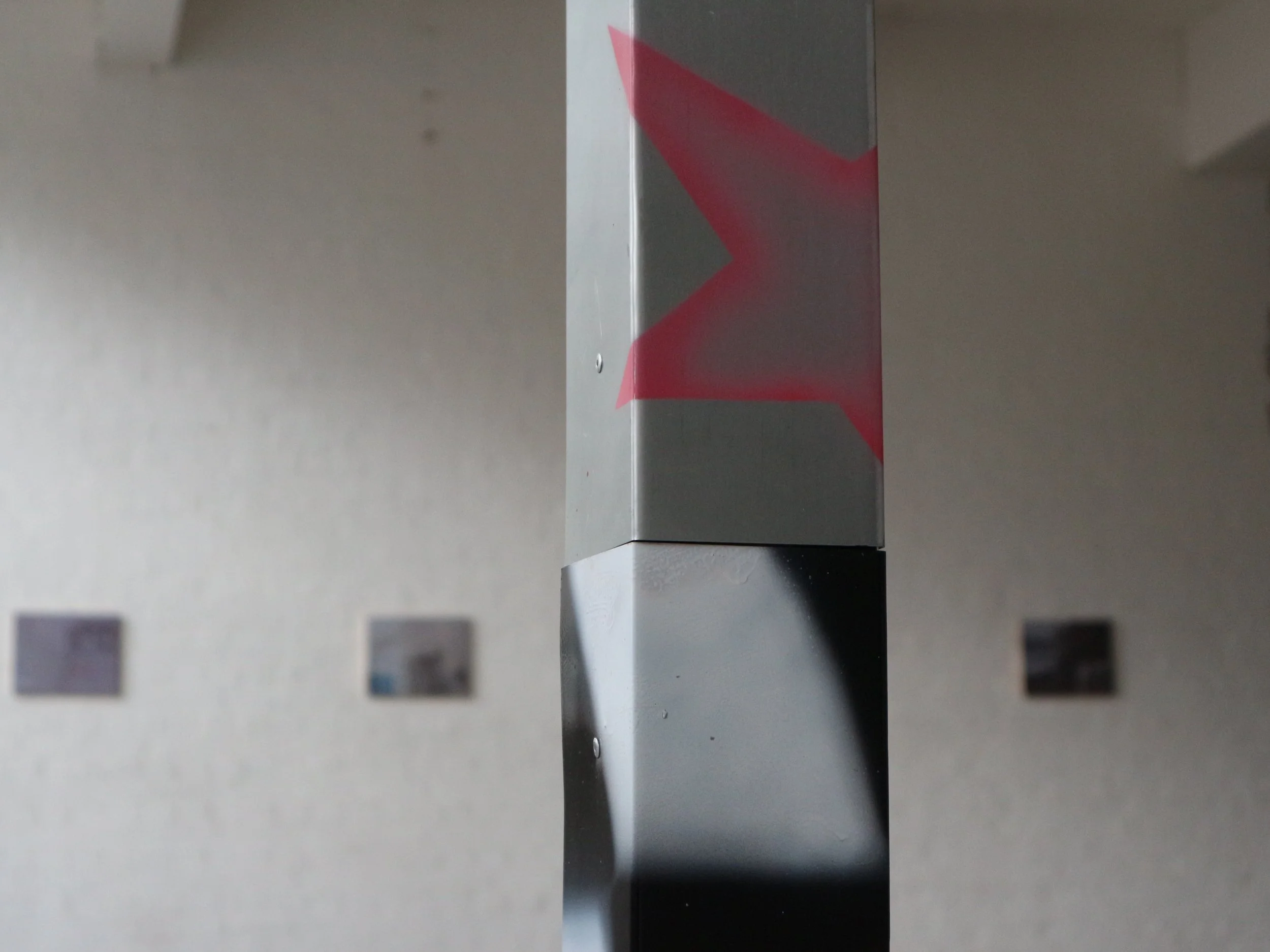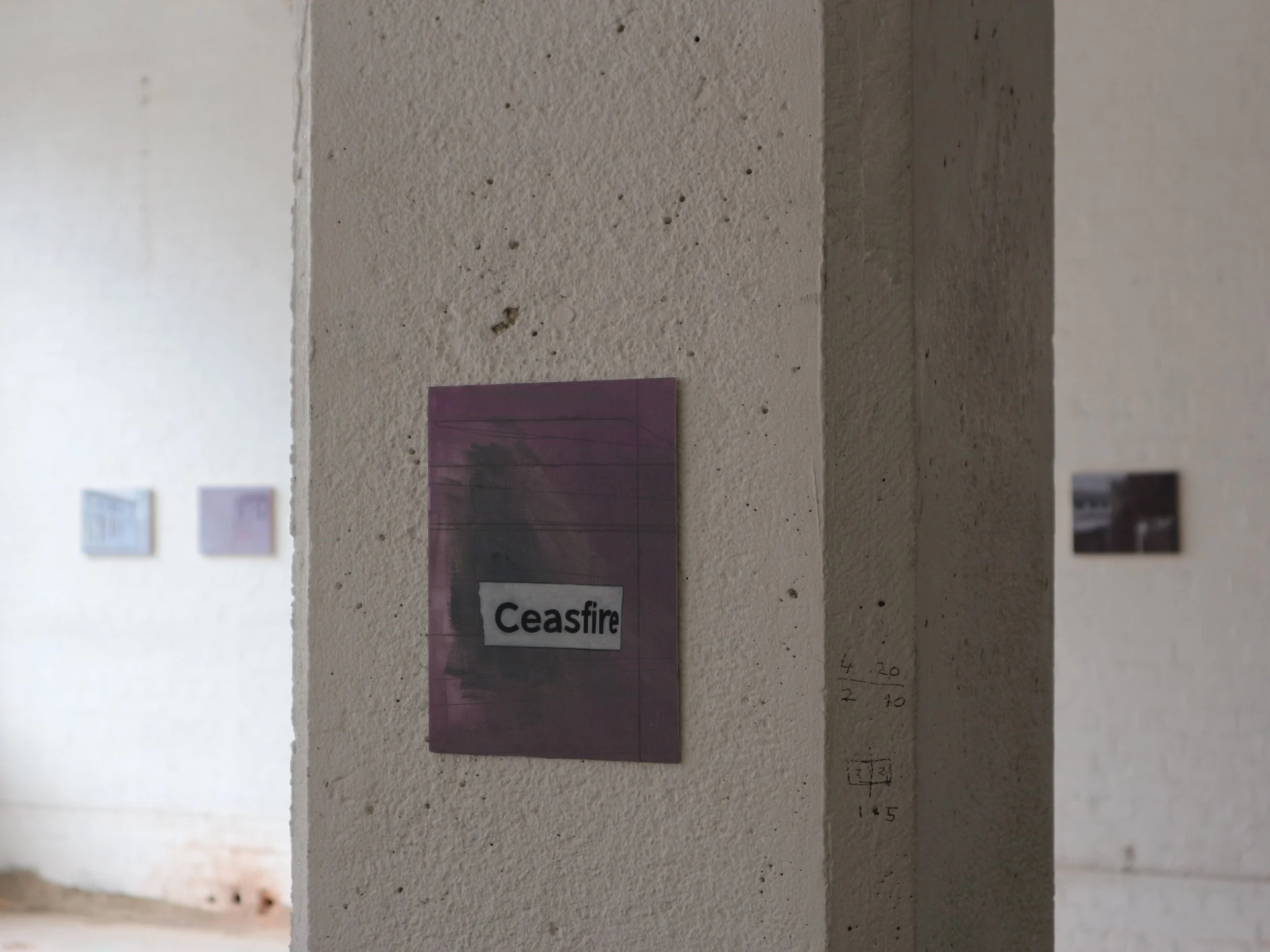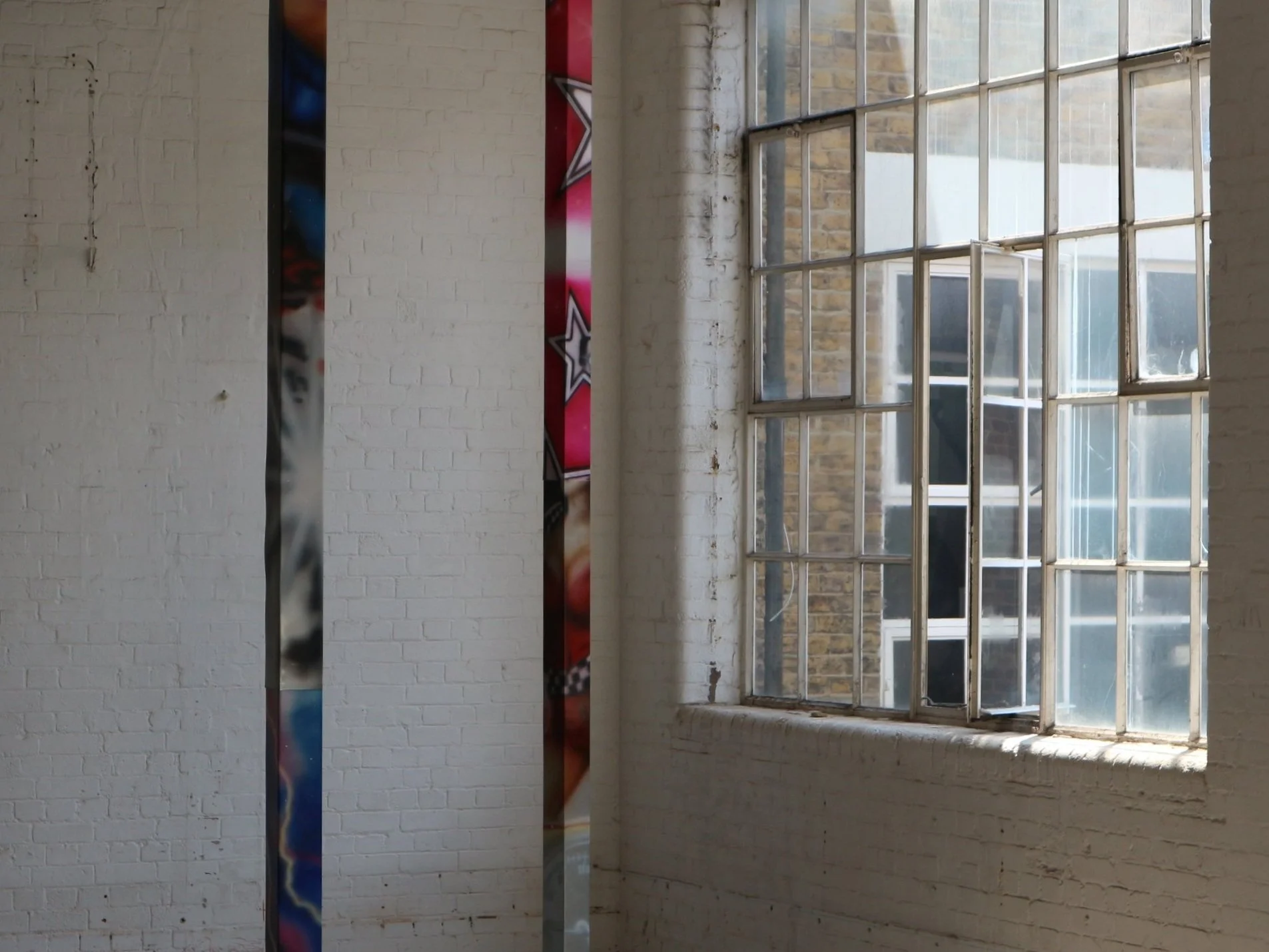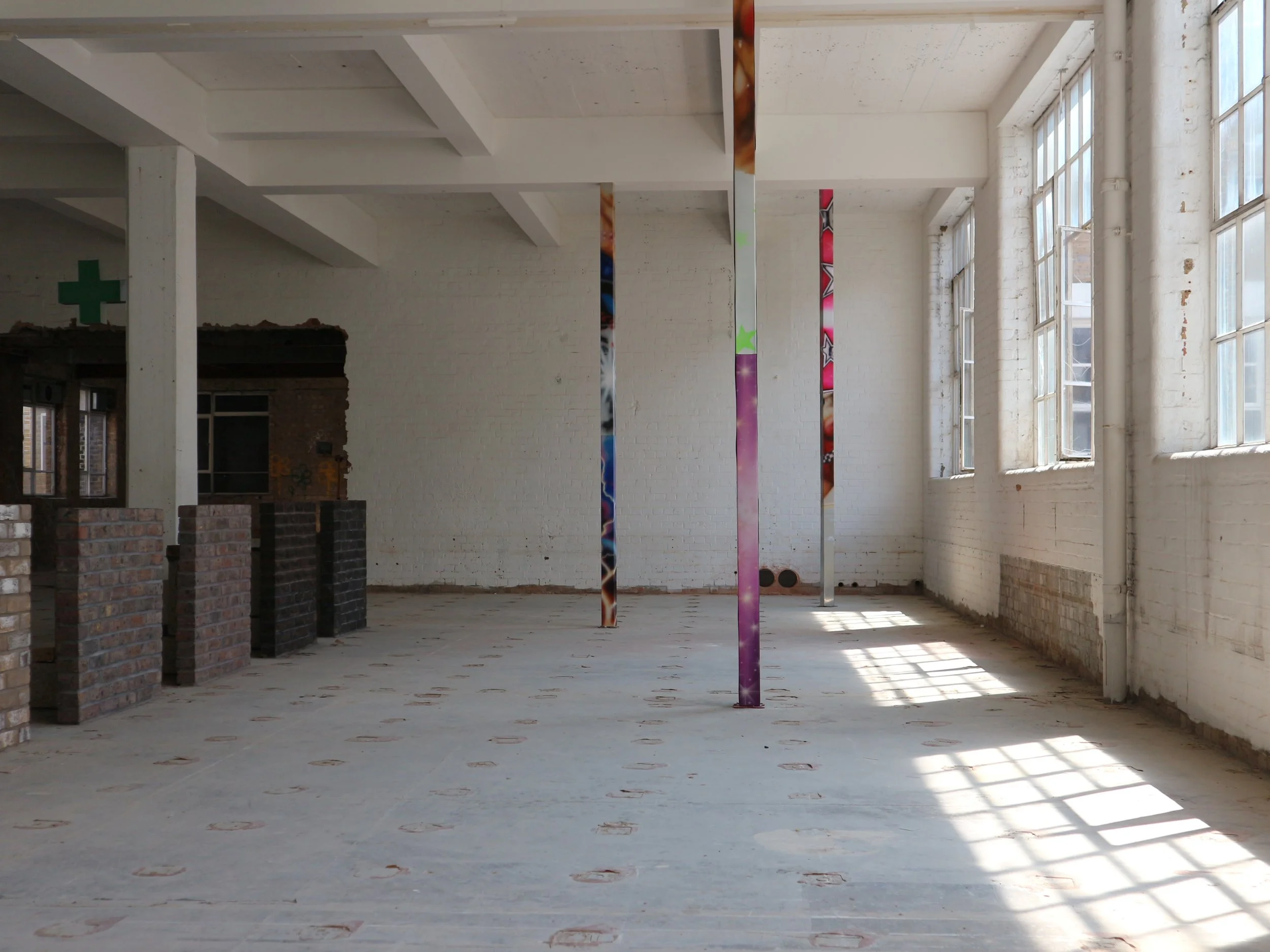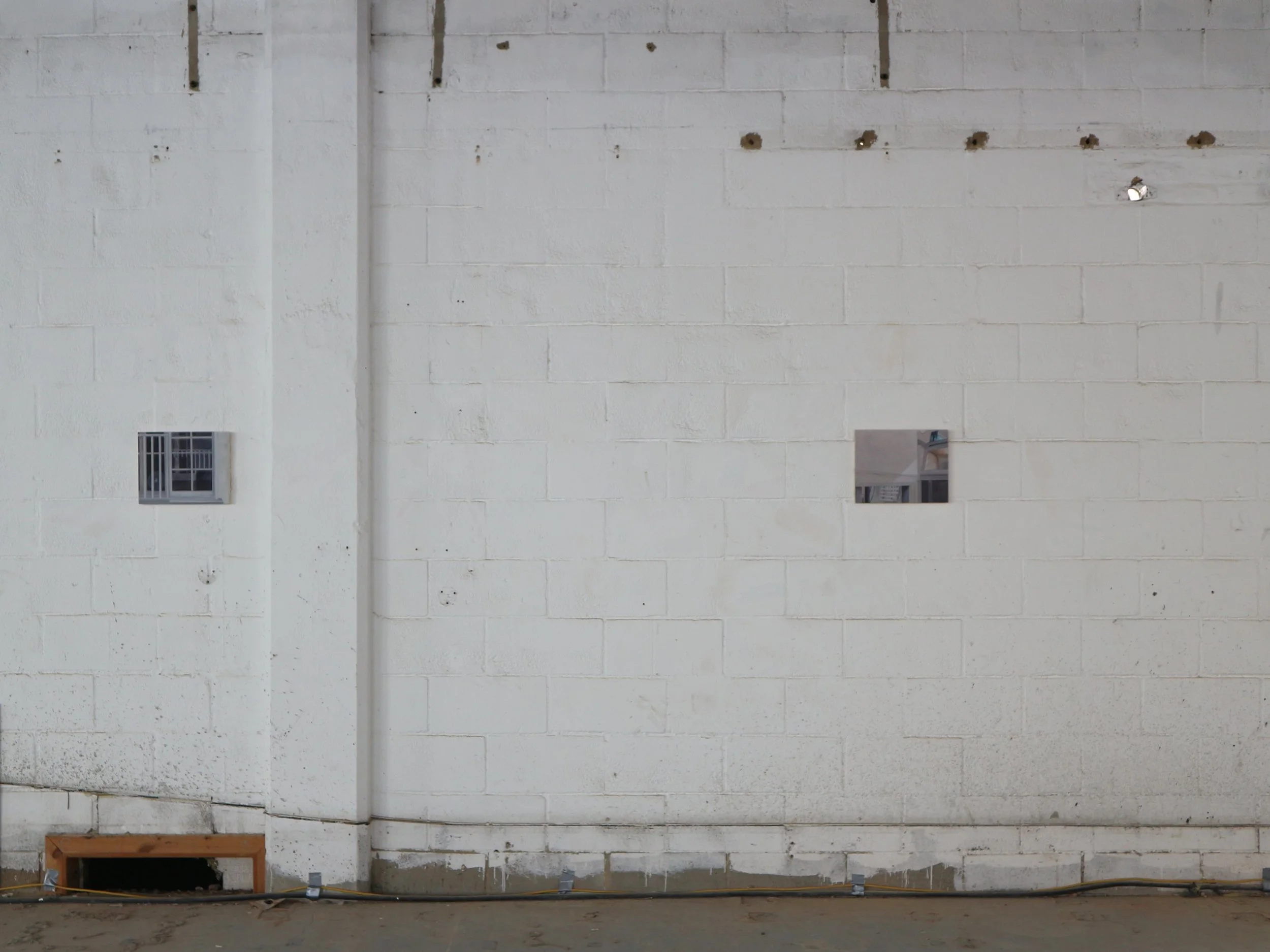Sometimes I think, but then I forget
Elena Grace & Erin Donnelly (Small Time Project, London.)
Exhibition descriptive review by Ryan O’Neill
“In this joint exhibition at Small Time Project in London, Elena Grace presents a number of paintings largely rooted in the domestic. The works depict moments of quiet – the choice to mostly avoid bright colour in favour of whites, purples and greys is, you sense, deliberate – but there are subtle hints that imply both a comforting familiarity, and a heaviness; papers left on top of a microwave; a pan left unwashed; a dimly lit street; a cross hung next to a drawn sheer curtain on a living room wall; a nondescript building with obtuse railing structures next to it, seen from a window; an idle fan in a room.
All of this, added to some of the works’ titles (‘View from the Staff Room’, ‘Girl on the bus’, ‘Pretty much back’), leaves the viewer unsure about what the artist is feeling; do they feel a sense of nesting, of home? Or a restlessness? The choice of vantage points and the subjects indicate a sort of in-between state – a lull between chores, a shift break, a pause between tackling family commitments – in a clever way that might land differently depending on the viewer or one’s feelings on a given day.
More immediately stark are Erin Donnelly’s sculptural works, airbrushed zinc four-sided panels resembling poles reaching the ceiling of the gallery space. The works are awash with colour and bold shapes – streaks of racecar red, chequered black and white, bursts of fiery yellow – that contrast Grace’s paintings to an almost extreme degree. There’s a clear intention here; to represent the outsized maximalism and allure of advertising and adrenaline, like the imagery one might find in a fairground, with the title itself ‘Headchopper’ implying movement, of spinning out of control.
The works challenge the comfort of the viewer, playing to the natural gaze in clever ways using bright colour, fire, a woman’s exposed chest.
Again here, there is more to be peeled back. The images vary in resolution, some razor-clear while others blurred, as if they’ve been zoomed in too far on a mobile phone. Located near the gallery’s flood of natural light, surrounded by exposed brickwork, piping and bare flooring, and presented as towering metal pieces, they are divorced from their usual context, surprising the viewer. The effect, to me, is as if the volume dial at the funfair – the pounding music and shrieks of laughter – has been turned down, like a power cut signalling the night is at an end.
There is much that can be interpreted here; the illusion of entertainment, the (always) temporary pacification of a child at the fair, a challenge to the viewer about what they consider garish, smutty, or fake. But there’s also a subtle, quiet longing for the simplicity of life as a child, about what could amuse and thrill, even if it promised more than it could deliver, perhaps before one realised recreating those feelings as an adult would, one day, be a little more hard-won.
On the face of it, the pairing of the two artists’ work appears to be rooted in juxtaposition – quiet vs noise, bold colour vs subtle shades, maximalism over simplicity – but there are ample clues to suggest the gap is smaller than on initial look. Crucially though, playfulness is threaded through the works too, present in the little details, from the male-gaze imagery to the clock on the TV.
The title of the airbrushed plexiglas pharmacy sign ‘Born Slippy’, with its inescapable associations with Trainspotting, is a brilliant cultural nod that evokes a sort of early morning half-night grogginess, coming off an all-nighter with the street still asleep around you, save for some ever-present storefront lights. Perhaps the gap between inner voices speaking to us in times of solitude at home, and the all-encompassing escapism of a night out, is not as big as you might think; maybe they are not much different at all.
There are points in the exhibition where the message is more stark; Grace’s painting of a ‘Ceasefire’ sticker leaves us in no doubt about where to direct our anger. But there’s a quiet ambiguity to the works that, in what it doesn’t tell you, tells you all it needs to.
The setting too is a striking one for the work; The exhibition takes place in an imposing building on Aylesbury Street – like many art spaces, temporary, but perhaps a perfect reflection of the artists’ work. The comfort in silence, the desire to capture the thrill of escape, the knowledge that things are, for better or worse, often temporary.”


